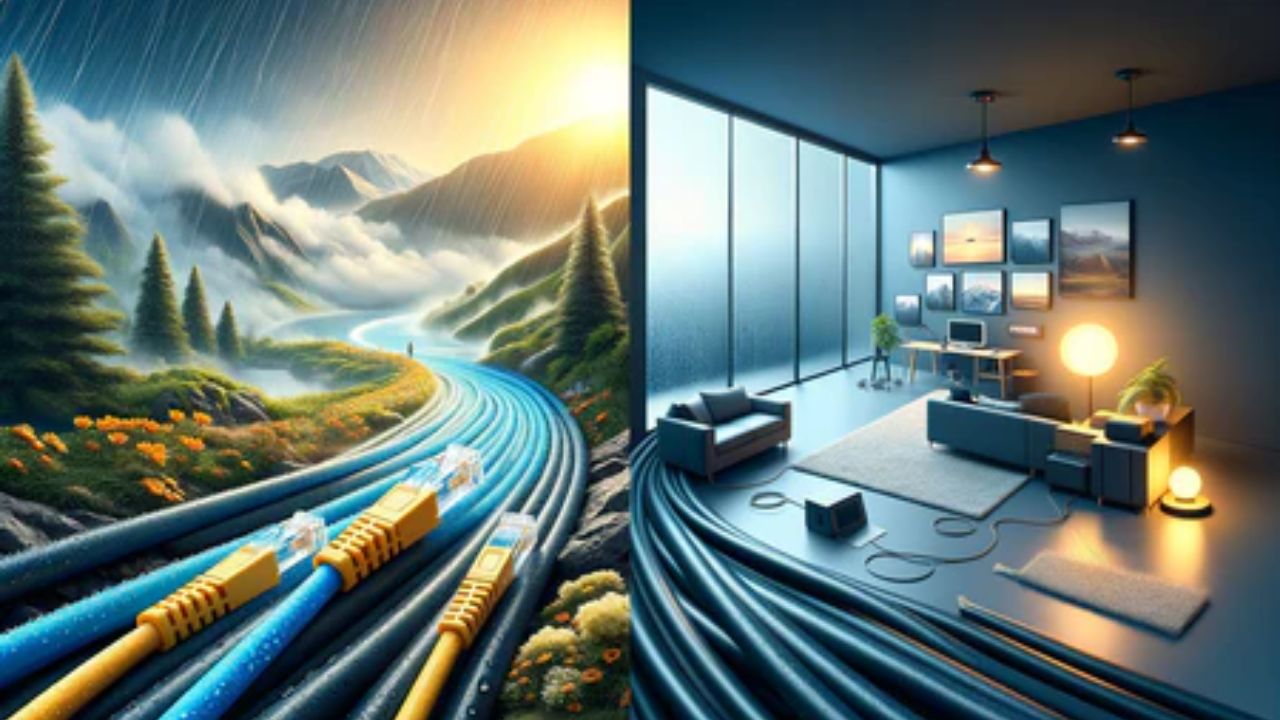Modern networking systems development requires network cabinets to play an essential role. Network cabinets function as essential housing units that contain vital networking equipment, including switches, routers, patch panels, and additional hardware. Network Cabinet Manufacturers design and produce both indoor and outdoor cabinets. Selecting the appropriate cabinet requires deciding between indoor and outdoor network cabinets as the main decision point. The two cabinet types share identical operational purposes yet exist for specific environmental needs. Organizations need to understand the fundamental distinctions between network cabinets alongside their advantages and suitable applications to make decisions that protect their networks from failure and maintain security.
Understanding the Basic Functions of Network Cabinets
Network cabinets serve as protective enclosures which organize networking equipment. Network cabinets organize cables while promoting airflow for cooling purposes and defending equipment from physical harm. Network enclosures situated inside or outside buildings enable network functionality by providing safe storage and easy access to components.
The environment where network cabinets are installed determines crucial aspects of their design together with material selection. Network cabinets used indoors and outdoors share a similar appearance but require different construction methods and protection standards and cooling systems and installation requirements.
Outdoor Network Cabinets
Outdoor network cabinets require specific engineering to operate in environments that present genuine threats from the elements. Outdoor cabinets are installed on rooftops, remote sites, industrial areas, and roadside installations. The cabinets contain powder-coated steel or aluminum materials with weatherproof seals, heavy-duty locks, and corrosion-resistant finishes.
Outdoor cabinets serve as protective enclosures for networking equipment through their ability to shield against rainstorms and snowfall and their resistance to dust and extreme temperatures and cold conditions. Outdoor cabinets provide integrated climate control systems with heaters and fans and sometimes air conditioning units to maintain equipment stability across all weather conditions. These cabinets incorporate security elements to stop vandalism and unauthorized access because the equipment needs protection in unattended locations.
Outdoor cabinets become more expensive because they combine protective elements with rugged construction while installation needs thorough planning. The positioning of these units requires consideration of three key factors, including sunlight exposure, wind load, and ground stability.
Indoor Network Cabinets
Network cabinets designed for indoor use find their place in data centers and server rooms, as well as offices and other temperature-controlled facilities. The protected indoor environment makes it unnecessary for these cabinets to achieve the same degree of ruggedization needed by outdoor versions. The cabinets use lightweight materials and contain ventilation systems that function with indoor air conditioning systems.
The cabinets typically combine easy access with attractive design elements. These cabinets feature glass doors, removable side panels, and lockable access points, which provide both easy maintenance access and equipment security. Standard fan or passive cooling methods operate effectively in climate-controlled environments to maintain proper internal temperatures while bypassing complex thermal management systems.
The cost of indoor cabinets remains more favorable than outdoor alternatives. These cabinets require minimal weatherproofing and heavy-duty construction, which makes them more affordable and easier to install.
Performance and Longevity Considerations
Network equipment performance and lifespan depend directly on the cabinet that contains them. Indoor cabinets maintain adequate protection when temperature changes remain small, and physical threats are minimal. Placing an indoor cabinet outside the building can result in equipment breakdown because of moisture penetration, heat stress, and physical harm.
The use of outdoor cabinets provides maximum durability but becomes an unnecessary expense when installed inside. The selection of cabinet type must align with environmental conditions to achieve peak performance while preventing unnecessary expense through over-engineering.
Choosing the Right Option for Your Network
Multiple essential factors determine which cabinet selection is best, including where it will be located, the climate conditions, security requirements, and financial constraints. Organizations that place their equipment in office areas, commercial buildings, or data centers typically need indoor network cabinets. These enclosures offer convenient accessibility and affordable solutions that work well with current HVAC systems.
Outdoor network cabinets represent the best choice for installations that need protection against environmental elements or exist in unsecured areas. Network infrastructure maintains operational safety and durability through the improved protection features of these cabinets.
Conclusion
The correct selection between indoor and outdoor network cabinets remains essential to achieve reliable and efficient networking systems. The protective and organizational functions of these enclosures differ because they are designed for unique environmental conditions. The selection process requires a comparison between the site conditions and the protective features offered by the cabinet. The selection enables businesses to protect their infrastructure while ensuring continuous connectivity throughout their operational environments.

